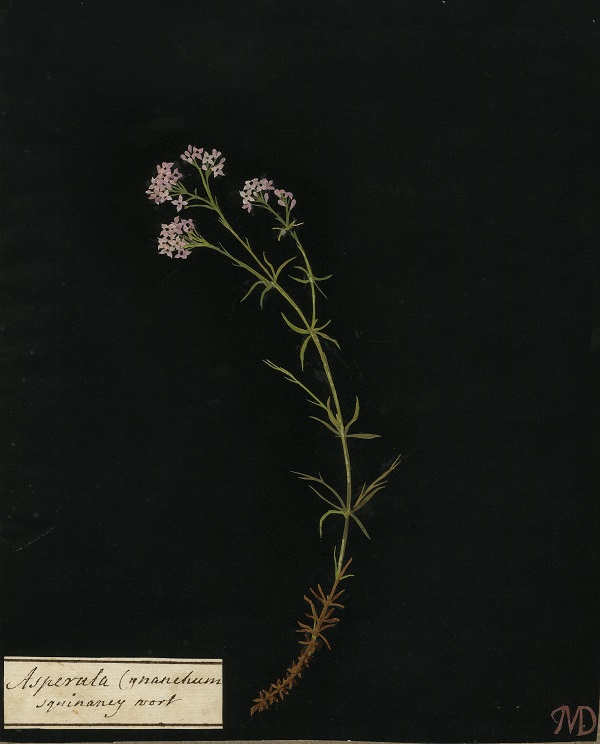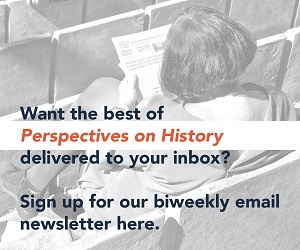Robert Shoemaker and Tim Hitchcock, founders of the pioneering digital history website Proceedings of the Old Bailey, had impressive ambitions for their book London Lives: Poverty, Crime, and the Making of a Modern City, 1690–1800 (Cambridge Univ. Press), published in 2015 in print and electronic editions. As Shoemaker explained in a blog post called “The Future of the (E)Book,” they envisioned “an innovative format which enables the agency of the reader.” By providing extensive links to primary and secondary sources, he and Hitchcock hoped to “cede control of the narrative,” so that their “authority as authors could be challenged by readers following their own agendas.” But, Shoemaker lamented, the press balked on the dynamic e-book idea and issued “little more than a photographic edition of the printed text.”

Production of scholarly monographs is increasingly turning to digital technologies. Rodney Truitt Jr./Wikimedia Commons/CC0 1.0
Three years on, however, the digital-publishing situation is quickly evolving. Scholars looking for more innovative modes of communication and interaction with audiences are finding common cause with university presses adapting their practices toward digital-first publication. This collaborative sensibility stands to reshape what are considered legitimate formats for historical scholarship, which is largely still beholden to the print monograph.
In August, I attended a meeting at the University of North Carolina at Chapel Hill to launch the Sustainable History Monograph Project, which aims to rethink history monographs as digital-first publications. (I am a member of the project’s advisory board.) I and the historians, publishers, librarians, and digital-publishing experts who attended discussed how the project could achieve a publishing model for book-length scholarly works integrated into the open web.
History makes up a huge part of what sustains university presses: one study found that over 25 percent of university press publishing is in history.
Even as cash-strapped universities eye presses with cuts in mind, some professionals are finding ways of rethinking publication processes. John Sherer, director of the University of North Carolina (UNC) Press, sees the uncertainty of the times as an opportunity. Coming to academic publishing after spending much of his career in trade books, Sherer took the helm of the press in 2012 and has been working to meet the challenges facing university presses. Under his leadership, and with the help of a Mellon Foundation grant, the nonprofit Longleaf Services (an affiliate of UNC Press that was originally set up as a distributor for academic publishers) expanded its purview. Longleaf now provides a much broader set of services that includes editorial, design, production, marketing, and operations. Working with Longleaf allows multiple university presses to pool costs, labor, and other resources.
Trade and commercial scholarly publishers create such economies of scale within single corporations—think, for example, of the many imprints that at one time were independent presses and now make up Random House Books, or Taylor and Francis’s prodigious acquisitiveness. In the commercial publishing sector, such consolidation happens through mergers and acquisitions. But university presses are part of larger educational institutions and not salable entities. As a result, they face challenges in achieving the necessary economies to make their work possible. Cooperation among presses, as represented by the way Longleaf facilitates sharing services, is one way to ensure their future success.
How does this affect monograph production? As the pioneering publisher Frances Pinter said during a recent webinar hosted by the Association of University Presses: “Monographs are really exciting in the digital age, because you can do so much with them.” But capitalizing on these possibilities requires new ways of thinking about monographs and, just as importantly, new processes for producing them.
Sherer views the role that university presses play in the circulation of knowledge as a mandate for creativity. These publishers “are pressed to disseminate as broadly as possible,” he wrote in an email to me, “with cost-recovery as a means to that end. The power of the web is by far the best way to disseminate most broadly.” Therefore, to ensure that presses use the web to its most productive capacity, publishers have to start “thinking of digital first.” Sherer proposes to strip down the monograph, enabling sustainable publishing and a path to wider distribution: innovating on the “input” (the publishing strategy) rather than the “output” (individual titles).
In a three-year Andrew W. Mellon Foundation–funded pilot partnership with university presses, Longleaf aims to publish between 100 and 150 “digital first” history titles, with the primary product being a digital edition. Each press will distribute a basic version electronically. This will limit large and, in many cases, unnecessary expenses like bespoke typesetting, cover design, and printing. With a publication process that enables lower-cost production and distribution, the pilot intends to make more specialized titles viable and, through the use of the web, to ensure that they have broad and open distribution, allowing the widest possible audience to obtain the works. In this, Longleaf will work with university presses to fulfill their mandate of disseminating knowledge as broadly as possible.
There are good reasons why university presses might not take advantage of the possibilities that digital publishing allows and instead view print editions as their primary products, with electronic editions digital facsimiles of them. University presses face such challenges as increasing institutional pressure to be self-sustaining, decreasing sales in many fields, and demands for open access, so the additional burdens of technological experimentation have mostly remained off the table.
The challenges presses face are of great concern to historians, as so much of our scholarly output and reputation as researchers is built on monographic scholarship. And the relationship is reciprocal. University presses remain vital to the discipline, and scholarship in history is indispensable to this sector of the publishing industry. Historical subject matter makes up a huge part of what sustains university presses: a 2017 study of the monograph output of university presses found that over 25 percent of university press publishing is in history.
Because books are no longer only paper and ink, publishers have a greater range of tools and avenues for dissemination of scholarship than ever before.
Another route that some university presses have taken explores ways to publish books that would not have been possible just a few years ago. Alongside new publishing workflows and digital dissemination, technology now allows for novel formats and ways of integrating primary sources and their interpretation—along the lines that Shoemaker and Hitchcock wished to pursue. In partnership with seven other university presses, the University of Michigan Press is developing a digital-publishing platform called Fulcrum, with the idea of providing authors and presses the possibility of integrating multimedia into long-form scholarly writing.
Fulcrum, while still in development, is already used to bringing together elements that would be impossible to offer in print. A Mid-Republican House from Gabii (Univ. of Michigan Press, 2016) is a multimedia publication exploring a private house excavated as part of the international Gabii Project, which has been unearthing a first-century BCE Roman site since 2009. The title uses Fulcrum to combine a database, a narrative, and a 3D model into a single publication. The 3D model allows readers to explore the primary sources in addition to the text and to investigate the data beyond the narrative.
The digital projects program at Stanford University Press has also been a leader in this sort of digital innovation for several years now. In 2016, the press published Enchanting the Desert, a historical-geography monograph that allows the reader to interact with maps and view an early 21st-century slideshow of images of the Grand Canyon as part of the work. Three more history titles—including books on modern China, 19th- and early 20th-century US religious history, and Egyptology—are forthcoming.
Stanford’s imprimatur is important. In email exchanges with me, the authors of two of these impending publications—Elaine Sullivan, author of Constructing the Sacred, and Lincoln Mullen, author of America’s Public Bible—each said that working with a university press is important to helping them reach scholars in their historical subject areas. Sullivan wants “colleagues in history and Egyptology to read” her work “no matter what format it is published in.” She hopes that by seeing her publish “through a traditional press,” colleagues “will more easily accept new forms of digital work as equal to and paralleling the traditional work” in her fields. Mullen, who has found it a challenge “to contribute to the conversations . . . in American religious history,” sees being published by Stanford as a chance to make his work “recognizable as a monograph.”
Beyond the historical insight and historiographical explorations they offer, works like Sullivan’s and Mullen’s enter the debate about the forms monographs can now take and the contributions those new forms can make to scholarship. Digital humanities projects still face the problems of scholarly evaluation and legitimacy, since in most cases they are published directly on the web by the members of the project team. The involvement of university presses solves part of this problem, since they have robust peer-review procedures that help the author improve the final product and confer legitimacy upon the scholarship.
Because books are no longer only paper and ink, but also bits and bytes, publishers have a greater range of tools and avenues for dissemination of scholarship than ever before. Digital publishing, the World Wide Web, print on demand, and a growing range of business models to pay for publishing scholarship allow for new kinds of thinking about disseminating knowledge. Longleaf’s monograph project, the multimedia possibilities offered by Fulcrum, and Stanford’s custom-tailored digital publications all demonstrate that productive change is possible.
Seth Denbo is director of scholarly communication and digital initiatives at the AHA. He tweets @seth_denbo.
Tags: News Scholarly Communication Digital History

This work is licensed under a Creative Commons Attribution-NonCommercial-NoDerivatives 4.0 International License. Attribution must provide author name, article title, Perspectives on History, date of publication, and a link to this page. This license applies only to the article, not to text or images used here by permission.
The American Historical Association welcomes comments in the discussion area below, at AHA Communities, and in letters to the editor. Please read our commenting and letters policy before submitting.
Comment
Please read our commenting and letters policy before submitting.









